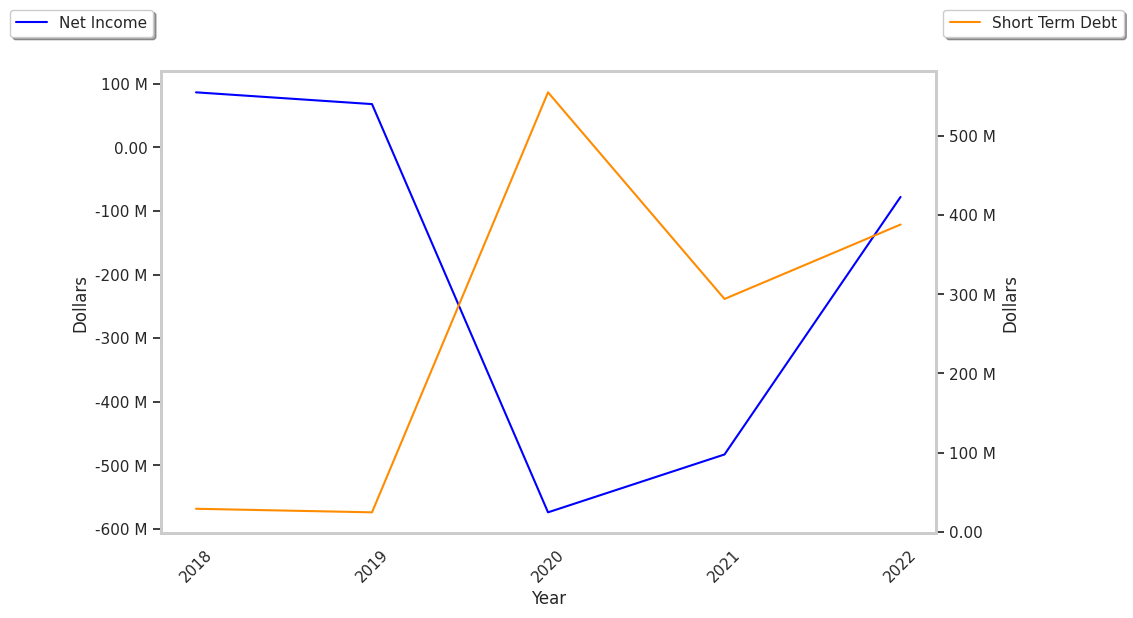One of Wall Street's biggest winners of the day is Elanco Animal Health, a pharmaceutical company whose shares have climbed 7.6% to a price of $13.66 -- near its average analyst target price of $13.75.
The average analyst rating for the stock is hold. ELAN may have outstripped the S&P 500 index by 7.0% so far today, but it has lagged behind the index by 17.1% over the last year, returning -0.9%.
Elanco Animal Health Incorporated, an animal health company, innovates, develops, manufactures, and markets products for pets and farm animals. The company is part of the healthcare sector. Healthcare companies work in incredibly complex markets, and their valuations can change in an instant based on a denied drug approval, a research and development breakthrough at a competitor, or a new government regulation. In the longer term, healthcare companies are affected by factors as varied as demographics and epidemiology. Investors who want to understand the healthcare market should be prepared for deep dives into a wide range of topics.
Elanco Animal Health does not release its trailing 12 month P/E ratio since its earnings per share of $-2.32 are negative over the last year. But we can calculate it ourselves, which gives us a trailing P/E ratio for ELAN of -5.9. Based on the company's positive earnings guidance of $0.89, the stock has a forward P/E ratio of 15.3.
As of the first quarter of 2023, the average Price to Earnings (P/E) ratio for US health care companies is 30.21, and the S&P 500 has an average of 15.97. The P/E ratio consists in the stock's share price divided by its earnings per share (EPS), representing how much investors are willing to spend for each dollar of the company's earnings. Earnings are the company's revenues minus the cost of goods sold, overhead, and taxes.
The main limitation with P/E ratios is that they don't take into account the growth of earnings. This means that a company with a higher than average P/E ratio may still be undervalued if it has high projected earnings growth. Conversely, a company with a low P/E ratio may not present a good value proposition if its projected earnings are stagnant.
When we divide Elanco Animal Health's P/E ratio by its projected 5 year earnings growth rate, we obtain its Price to Earnings Growth (PEG) ratio of -2.14. Since a PEG ratio of 1 or less may indicate that the company's valuation is proportionate to its growth potential, we see here that investors are undervaluing ELAN's growth potential .
To better understand the strength of Elanco Animal Health's business, we can analyse its operating margins, which are its revenues minus its operating costs. Consistently strong margins backed by a positive trend can signal that a company is on track to deliver returns for its shareholders. Here's the operating margin statistics for the last four years:
| Date Reported | Total Revenue ($ k) | Operating Expenses ($ k) | Operating Margins (%) | YoY Growth (%) |
|---|---|---|---|---|
| 2023 | 4,411,000 | 5,523,000 | -26 | -1200.0 |
| 2022 | 4,411,000 | 4,483,000 | -2 | 83.33 |
| 2021 | 4,764,000 | 5,335,000 | -12 | 42.86 |
| 2020 | 3,271,000 | 3,948,000 | -21 | -800.0 |
| 2019 | 3,071,000 | 2,993,000 | 3 | -25.0 |
| 2018 | 3,066,800 | 2,952,700 | 4 |
- Average operating margins: -9.0 %
- Average operating margins growth rate: -12.0 %
- Coefficient of variability (lower numbers indicate less volatility): 6498.6 %
Another key to assessing a company's health is to look at its free cash flow, which is calculated on the basis of its total cash flow from operating activities minus its capital expenditures. Capital expenditures are the costs of maintaining fixed assets such as land, buildings, and equipment. From Elanco Animal Health's last four annual reports, we are able to obtain the following rundown of its free cash flow:
| Date Reported | Cash Flow from Operations ($ k) | Capital expenditures ($ k) | Free Cash Flow ($ k) | YoY Growth (%) |
|---|---|---|---|---|
| 2023 | 127,000 | 138,000 | -11,000 | -103.49 |
| 2022 | 452,000 | 137,000 | 315,000 | -11.76 |
| 2021 | 483,000 | 126,000 | 357,000 | 323.12 |
| 2020 | -41,000 | 119,000 | -160,000 | -290.48 |
| 2019 | 224,000 | 140,000 | 84,000 | -76.19 |
| 2018 | 487,300 | 134,500 | 352,800 |
- Average free cash flow: $156.3 Million
- Average free cash flown growth rate: -7.0 %
- Coefficient of variability (the lower the better): 845.7 %
If it weren't negative, the free cash flow would represent the amount of money available for reinvestment in the business, or for payments to equity investors in the form of a dividend. While a negative cash flow for one or two quarters is not a sign of financial troubles for ELAN, a long term trend of negative or highly erratic cash flow levels may indicate a struggling business or a mismanaged company.
Another valuation metric for analyzing a stock is its Price to Book (P/B) Ratio, which consists in its share price divided by its book value per share. The book value refers to the present liquidation value of the company, as if it sold all of its assets and paid off all debts.
Elanco Animal Health has a P/B ratio of 1.1. This indicates that the market value of the company exceeds its book value by a factor of more than 1, but is still below the average P/B ratio of the Health Care sector, which stood at 4.08 as of the first quarter of 2023.
Elanco Animal Health is by most measures overvalued because it has a negative P/E ratio, a lower P/B ratio than its sector average, and irregular cash flows with a downwards trend. The stock has poor growth indicators because it has a a negative PEG ratio and consistently negative margins with a negative growth trend. We hope you enjoyed this overview of ELAN's fundamentals.



